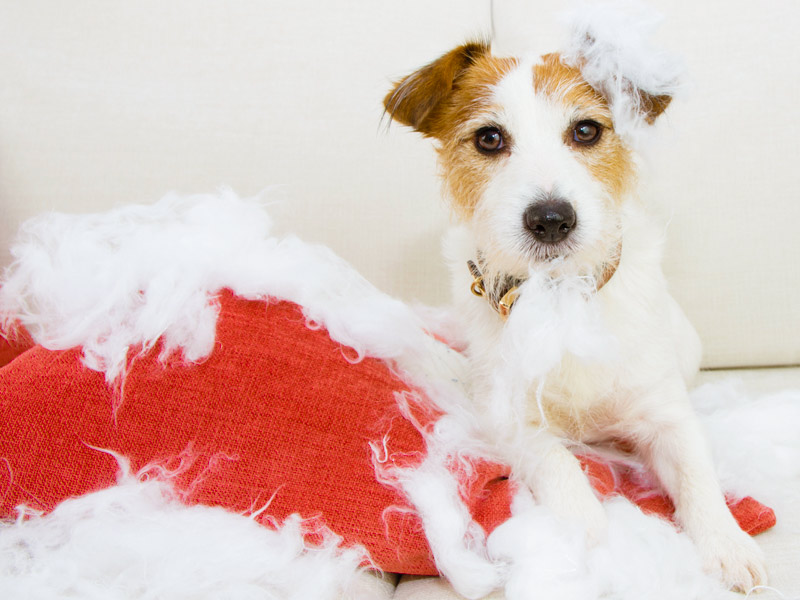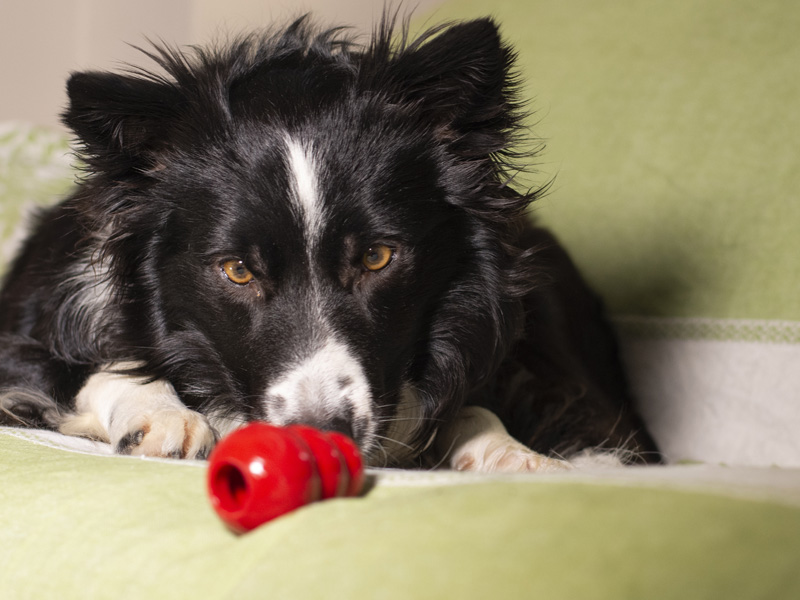In our new world of pandemic induced staying at home, separation anxiety is new for some pets. Has your dog gotten used to you being home all day? Has your cat enjoyed all the extra time she gets to lay in your lap? If you are seeing some new behaviors in your pets as you prepare to leave your house or while you are away, read on.

What is Separation Anxiety?
Separation anxiety is a sign of distress in your pet. It is triggered when a dog is upset because of separation from their pet parents, or the people they are most attached to. Did you know that the anxiety is so extreme for some pets that they try hurt themselves trying to get out of the house? You may notice that your pet becomes agitated as you prepare to leave the house. They understand what is about to happen.
Some dogs will try to prevent their favorite people from leaving. Then, right after their pet parents leave the house the separation anxiety becomes so bad they act out. For instance, some animals will bark incessantly. Others will begin destroying objects around the home. Furthermore, some will urinate or defecate in the house. Pets are not equipped the way humans are to cope with missing someone they love.
Did You Know: Separation anxiety is often more prevalent in dogs who have spent time in a shelter? Being surrendered by their family and left behind at a shelter leaves a lasting impression for many animals.
Treating Mild Separation Anxiety in Pets
The goal in treating this reaction is teaching them to enjoy or at least tolerate being left alone.
First, speak with your veterinarian to rule out any other underlying issues. Then, take action to counter-condition the behavior.
This means focusing on developing an associate with being left alone with good things. For instance, their favorite food or treat. What does that mean? Try offering your pet a treat puzzle each time you leave the house. For example, try giving your dog a puzzle stuffed with something really tasty, like peanut butter, spray cheese, small training treats, frozen banana, or canned dog food. Some toys can even be froze. This makes getting the treat take even more of your dog’s time. Most importantly, remove these toys as soon as you return home so that your dog only has access to them when he’s by himself. They’ll begin to associate something fun with you getting ready to leave the house and their time alone.

Dogs with more severe cases of separation anxiety may require a different approach. Speak with your vet for ideas and treatment plans.
Going Back to Work
As the world, and businesses, begin to get back to normal, your pet’s schedule is being disrupted again. If you find yourself going back to the office one day or five days per week, this will trigger more separation anxiety episodes.
When you can, try to take your pet to work with you. Since this is not realistic for many, hiring a pet sitter will help with their anxiety. Believe it or not, most pets suffering from separation anxiety are calmed as long as someone, even if not you, are with them.
For More Information
If you have questions about this topic or general questions about pet care, you can contact Kara Jenkins, Owner of TLC House & Pet Sitting. We are also available by email at info@tlcpetsitter.com. View more of our articles on pets here.
If you have questions about this topic or general questions about pet care, you can contact Kara Jenkins, Owner of TLC House & Pet Sitting. We are also available by email at info@tlcpetsitter.com. View more of our articles on pets here.
